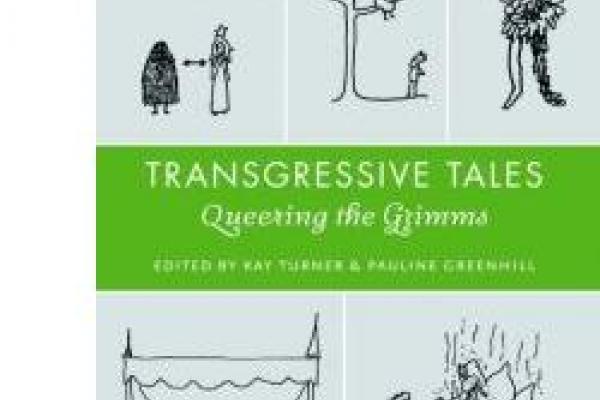
"If thou be woman, be now man!"
Fairy Tales as Trans-sexual Imagination
Co-sponsored by the OSU Folklore Student Association.
Fairy tales... concern themselves with sexual distinctions, and with sexual transgression... The realms of wonder and impossibility converge, and fairy tales function to conjure the first in order to delineate the second: magic paradoxically defines normality. (Marina Warner, From the Beast to the Blonde, 133).
A transgender imagination - thinking about or expressing the idea that a person, self or other, is or could be a different sex/gender than they appear--works in several folkloric genres. Elsewhere, I argued that in traditional ballads in English, the transgender imagination seems limited to two possibilities. First, a male character forced by circumstances dresses in women's clothes or a female character chooses to cross dress. Second, a male character expresses desire for transsexual transformation, either that he himself were female and thus a potential lover to a male character, or that another apparent male (actually a cross-dressed woman) were female, again to enhance sexual possibilities.
The traditional fairy tale may be unique in offering a transsexual imagination, specifically the textual representation of an embodied sex change. Hans-Jörg Uther's (2004) revision of Aarne-Thompson's tale type index offers two unequivocal examples: ATU 363 "The Corpse Eater" and ATU 514 "The Shift of Sex." In the former, transformation is limited, temporary, and contingent.
In "The Shift of Sex," however, the female-born protagonist begins by cross-dressing to access male play and work. S/he rescues and then marries a princess who proves less than pleased to discover her bridegroom's female sex. After the hero/ine accomplishes impossible tasks, generally helped by a marvelous horse, a supernatural curse transforms her/his sex to male. The princess is now satisfied with her mate, and the expected "happy ever after" concludes. My talk will detail versions of "The Shift of Sex" to investigation how they imagine trans-sex in terms of the "normality" asserted in Marina Warner's epigraph.
Pauline Greenhill is Professor of Women's and Gender Studies at the University of Winnipeg and past president of the Canadian Women's Studies Association. She studied folklore at Memorial University of Newfoundland and then the University of Texas at Austin. Her wide-ranging and prize-winning research includes the co-edited 2-volume Encyclopedia of Women's Folklore and Folklife (2008), the festival study Make the Night Hideous: Four English Canadian Charivaris, 1881-1940 (2010); the co-edited Fairy Tale Film and Cinematic Folklore: Visions of Ambiguity (2010), and the just-published Transgressive Tales: Queering the Grimms (with Kay Turner).
